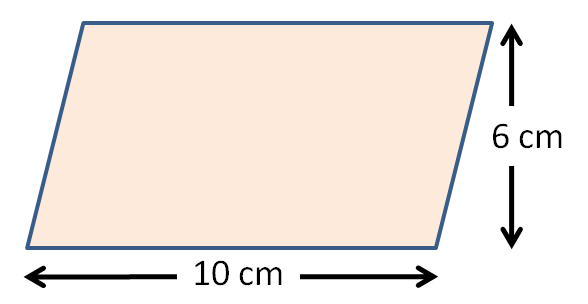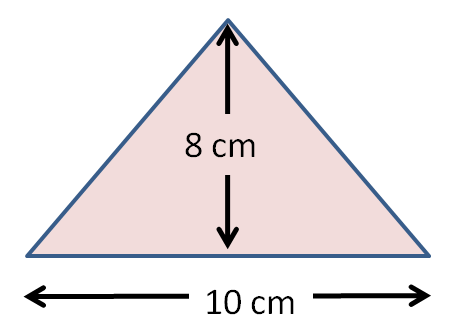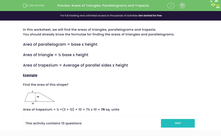In this activity, we will find the areas of triangles, parallelograms and trapeziums.
Here's a reminder of the formulae for finding them:
Area of parallelogram = base x vertical height

In the example above, the base is 10 cm and the vertical height is 6 cm.
The area is 10 x 6 = 60 cm²
Area of triangle = ½ base x vertical height

In the example above, the base is 10 cm and the vertical height is 8 cm.
The area of the triangle is 1/2 x 10 x 8 = 40 cm²
Area of trapezium = Average of parallel sides x vertical height
This is also written as 1/2 (a + b) x h where a and b are the two parallel sides.
.png)
In the example above, the two parallel sides are 6 cm and 12 cm, so the average is 6 + 12 = 18 ÷ 2 = 9
The vertical height is 8 cm
The area is 9 x 8 = 72 cm²
Remember that areas are always squared units of measurement - in all these examples, they are in cm²
Let's have a go at the questions.
If you need to check back to this page to remind yourself of the formulae, just click on the pink button on the right of the screen at any time.








